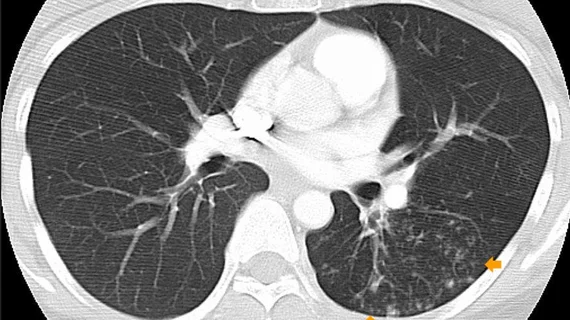Commercial PE-detecting algorithm identifies incidental clots on CT
A new study published in the American Journal of Roentgenology revealed that a commercially available artificial intelligence algorithm is capable of operating off-label to detect incidental pulmonary embolisms (iPEs) on contrast-enhanced CT scans.
What’s more, the algorithm was able to identify some iPEs missed by radiologists. Experts involved in the study, which analyzed more than 3,000 CT scans, suggested that there could be a future role for the algorithm to assist radiologists in busy settings.
“Potential applications of the AI tool include serving as a second reader to help detect additional iPEs or as a worklist triage tool to allow earlier iPE detection and intervention,” corresponding author Kiran Batra, MD, with the Department of Radiology at University of Texas Southwestern Medical Center, and co-authors wrote.
Prior research has already proven the utility of AI algorithms integrated into PE protocols, but less is known about their ability to identify incidental findings on routine exams the way radiologists do. This is what prompted researchers to assess a commercially available PE-detecting algorithm’s ability to spot iPEs on routine contrast-enhanced CT scans.
A total of 2,555 patients with 3,003 CT exams were included in the study. Out of those scans, 40 were positive for PE. The algorithm detected 4 iPEs missed by clinical reports, while the clincal reports included 7 that the algorithm missed.
AI recorded lower specificity and positive predictive values but was on par with the clinical reports in terms of sensitivity and negative predictive values. The researchers explained that the false positives noted by AI could be due to metastatic lymph nodes and pulmonary venous filling defect on some of the scans, and that the false negatives occurred when surgically altered anatomy was present.
Regarding the future use of the algorithm, experts offered their advice for optimizing AI performance:
“Various explanations of AI misclassifications may provide targets for model improvement.”
The study abstract and results can be viewed in the American Journal of Roentgenology.
More on incidental radiological findings:
Managing incidental radiologic findings: ACR-led initiative proposes several recommendations
Routine CT scans offer opportunistic assessments of the parathyroid gland
Free-text radiology reports hold clues for managing incidental pancreatic lesions
Subspecialty radiologists disagree with non-specialists’ incidental nodule guidance in 38% of cases

